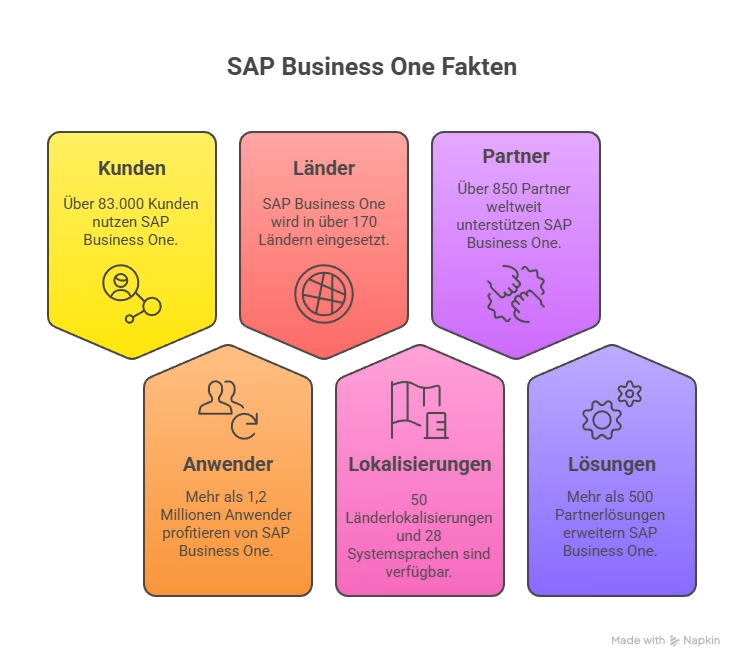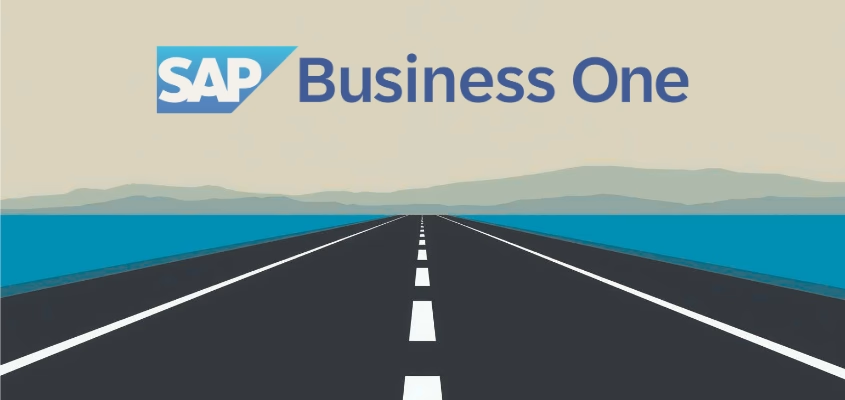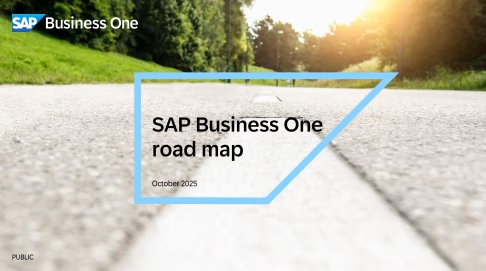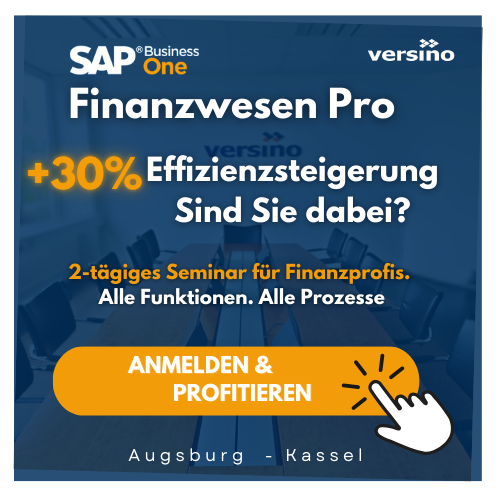When small and medium-sized enterprises (SMEs) think of SAP Business One, one image often comes to mind: a rock-solid, reliable ERP system that has been reliably mapping core processes from accounting to warehouse management for years. It is the reliable engine in the background, but perhaps also a system that is not necessarily associated with the buzzwords „AI“, „low-code“ or „modern cloud architecture“.
But a closer look at the official SAP Business One roadmap paints a completely different picture. Instead of a static system that is merely maintained, a dynamic, open and surprisingly modern platform is revealed. The strategy goes far beyond the mere management of business processes and positions SAP Business One as a future-proof digital core for the modern SME. So what does the future really hold for the more than 83,000 customers worldwide? The answer to this question is far more exciting than many might expect.
1. the future is in the browser: The web client is more than just a new interface
One of SAP's key investments is channelled directly into the Web Client, and for good reason. This is far more than just a visual refresh of the classic client. It is a completely new user interface based on the modern SAP Fiori Design System and can be run in any native web browser without installation.
The Web Client already covers an impressive range of core processes and enables end-to-end working:
- Sales and purchasing documents: From the complete process from quotations to invoices, including framework agreements and recurring transactions.
- CRM, service and time recording: Management of customer relationships, service calls and project times.
- Basic financial processes: Access to chart of accounts, journal entries, posting templates and recurring postings.
- Inventory postings: Goods receipts, goods issues, inventory counts, stock transfers and parts lists.
This change is fundamental. It is not just about a new look, but about a paradigm shift in terms of accessibility and user-friendliness. Modern analysis functions such as list view analyses, linked views and user-defined queries are integrated directly into the interface. For companies, this step significantly lowers the entry barriers for new employees and enables flexible working from anywhere in the world. This is a decisive advantage in today's working world.
2. no monolith: SAP B1 becomes an open platform for AI and low-code
The idea of SAP Business One as a closed system is outdated. The roadmap clearly shows that the solution is developing into an expandable core that fits seamlessly into a modern technology landscape. The central „digital enablers“ for this are the SAP Business Technology Platform (SAP BTP) and SAP Build.
With SAP Build, companies and partners can create their own apps, automate processes and design business sites with „drag-and-drop simplicity“. This opening makes SAP Business One „ready for the adaptation of AI services“. The roadmap names specific examples:
- Document Information Extraction: An AI service that automatically reads incoming invoices and drastically reduces manual data entry.
- SAP Build Process Automation: Frees employees from repetitive, error-prone tasks by automating work processes.
This is not just about gaining access to new technology, but about fundamentally changing the way we work. The automation of invoice processing with Document Information Extraction not only saves time, but also frees a valuable employee from hours of manual data entry. This allows them to concentrate on supplier relationship management or cash flow analyses. The automation of work processes with SAP Build not only reduces errors, but ensures that a customised approval process for high-value orders is followed every single time, strengthening internal controls.
3. long-term security: version 11 is planned for 2027
A common concern with established software is the question of long-term investment security. Will the platform still be developed further in five or ten years' time? The official SAP Business One roadmap provides an unequivocal answer: yes. SAP's commitment is evident not only in major future releases, but also in the constant stream of updates for the current version 10, with a clear schedule for feature packages in the coming years (FP 2602, FP 2608, etc.).
As a clear commitment to the future, the roadmap states that following these continuous improvements, the Version 11 planned for 2027. This long-term horizon proves that SAP firmly believes in the future of the solution and is continuing to develop it strategically. Thomas Saueressig, member of the Executive Board of SAP SE, emphasises this strategic importance:
“We're investing in the future and security of SAP Business One, enhancing its integration with the SAP Business Technology Platform to simplify development, and we're expanding the capabilities of its Web client. These innovations ensure that SAP Business One continues to grow and adapt to the evolving needs of small businesses.”
For customers, this clear statement means one thing above all: investment security. The certainty that their central business software will not only be maintained, but also actively adapted to the technological and business requirements of the future, is an invaluable strategic advantage.
4 Ready for the modern cloud: containerisation and hyperscalers
The cloud strategy for SAP Business One goes far beyond simply hosting servers. The roadmap looks to a technologically advanced future and plans decisive steps for version 11, including investigating the „potential use of containerisation technology“. Put simply, containerisation is like packing the entire SAP Business One application with all its dependencies into a standardised shipping container. This „container“ can then be moved and executed on any modern cloud infrastructure (a „ship“) without having to be repackaged or reconfigured.
In addition, a „new generation of cloud control centres“ and „deployment on leading hyperscaler platforms“ (such as AWS, Azure or Google Cloud) are planned. These technical details have strategic business advantages: Containerisation means less reliance on specific hardware, enabling faster and more reliable deployments and upgrades. The use of hyperscalers gives SMEs access to first-class security, scalability and reliability that they could never build themselves. It is the technological future-proofing of the organisation's IT infrastructure.
5 A global success story in figures

While SAP is often primarily associated with large corporations, the official key figures for SAP Business One paint a different picture: that of an impressive global success story in the SME segment.
- 83.000+ Customers
- 1.2+ million Users
- Use in 170+ Countries
- 50 Country localisations and 28 System languages
- 850+ Partners worldwide
- 500+ Partner solutions
These figures are more than just statistics. For a company evaluating an ERP solution, the last two points are particularly crucial. The 850+ partners and 500+ partner solutions represent a huge, global ecosystem of expertise. This means that a customer not only buys software, but also gains access to a network of specialists who offer industry-specific extensions (e.g. for manufacturing, retail or services). They can also offer local support and customised implementations. This significantly reduces the investment risk.
——————————————————————————–
The course is set for the future
The official roadmap impressively demonstrates that SAP Business One is evolving from a self-contained ERP product into the core of a flexible, networked digital ecosystem for SMEs. The web client makes it accessible everywhere, the SAP BTP makes it expandable. What's more, the planned version 11 guarantees longevity and the modern cloud architecture makes it future-proof and scalable. These five truths show a platform that is not stuck in the past, but is also consistently geared towards the digital transformation of small and medium-sized companies.
The course has been set for the future - is your corporate strategy ready to utilise these new technological opportunities?

Data quality & AI : AI can only be as good as your data

AI-ERP transformation basics and AI governance

Monolithic ERP systems in SMEs: challenges, solutions and risk management




